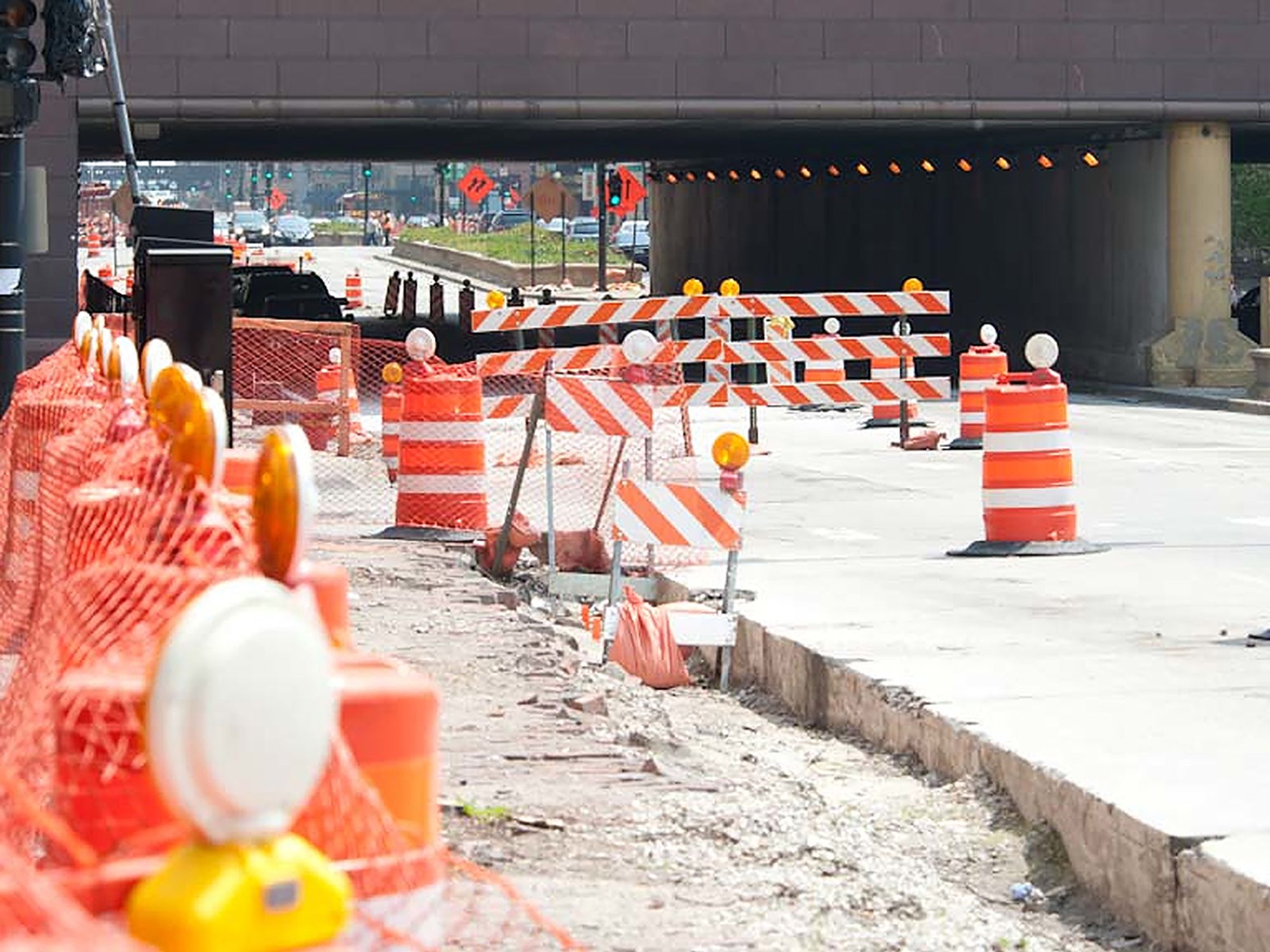Traffic control plan and devices

- Employers are required to create and maintain a traffic control plan that uses traffic control devices to inform motorists about a work zone they will encounter.
- Traffic control devices are signs, signals, markings, and other devices used to regulate, warn, or guide traffic, placed on, over, or adjacent to a street, highway, walkway, or bikeway by a public or jurisdictional authority.
- Signs are categorized as regulatory, warning, or guide and are used to warn motorists of construction ahead and to instruct motorists on what actions to take such as reduce speed or prepare to stop.
Employers are required to create and maintain a traffic control plan. The first step in designing a safe and efficient traffic control plan is informing the public. This education process begins with notices in the media and extends to the worksite with plenty of strategically placed warning and informational signs.
Traffic control devices are defined as signs, signals, markings, and other devices used to regulate, warn, or guide traffic; placed on, over, or adjacent to a street, highway, walkway, or bikeway by a public or jurisdictional authority. Some common traffic control devices include (but are not limited to) signs, warning lights, arrow panels, channelizing devices, portable concrete traffic barriers, and temporary pavement markings.
Informing motorists about a work zone they will encounter is essential. Two general kinds of alerts are used:
- Motorists are warned that there is construction ahead.
- Motorists are instructed on what actions to take, due to the work zone, e.g., reduce speed or be prepared to stop.
When a single advance warning sign is used (in cases such as low-speed residential streets), the advance warning area can be as short as 100 feet. When two or more advance warning signs are used on higher-speed streets, such as major arterials, the advance warning area should extend a greater distance.
Typically, the first advance warning sign is placed 300 to 5,140 feet before a work zone depending on the road type (urban, rural, or expressway/freeway) and the speed limit; the second warning sign is 200 to 4,140 feet from the work zone; and the third, 100 to 2,640 feet from the work zone. See the Manual on Uniform Traffic Control Devices (MUTCD) Millennium Edition for specific distances.
The Occupational Safety and Health Administration (OSHA) requires that at points of hazard, construction areas be posted with legible traffic control signs and protected by traffic control devices. The design and use of traffic control devices, including signs, signals, markings, barricades, and other devices, for protection of construction workers must conform to Part 6 of the MUTCD.
Signs are categorized as regulatory, warning, or guide.
Regulatory signs, i.e., STOP, ROAD CLOSED, or SPEED LIMIT, inform road users of traffic laws or regulations, and you must get permission from the agency that has jurisdiction over that road before using these signs.
Warning signs, i.e., RIGHT SHOULDER CLOSED, DETOUR, or ROAD WORK 1000 FT, notify road users of situations or conditions on or adjacent to a roadway.
Guide signs, i.e., ROAD WORK NEXT XX MILES, are used to give directions, route markings, or the condition of the work being done.
There are even message signs that display “real-time” information, i.e., changing weather conditions, detours, etc.
Warning lights are often used in areas prone to fog or severe weather. They usually are used to supplement standard signs or warning and channelizing devices.
Flashing or sequential arrow panels are an effective way to warn drivers of the need to change lanes or directions.
Channelizing devices, such as traffic cones, drums, and barricades, are often used to prohibit motorists from entering a traffic lane or area where work is underway. Reflectorization of these devices may be required for night use. Warning lights may be added.
Portable concrete traffic barriers may be needed in some situations. If a driver strikes one, the barrier is designed to deflect the vehicle back into the roadway where it is less likely to collide head-on with structures or other vehicles.
Temporary pavement markings are used to supplement the other types of traffic control devices. If existing pavement markings conflict with the interim path of travel, then additional signs and traffic devices are needed.
